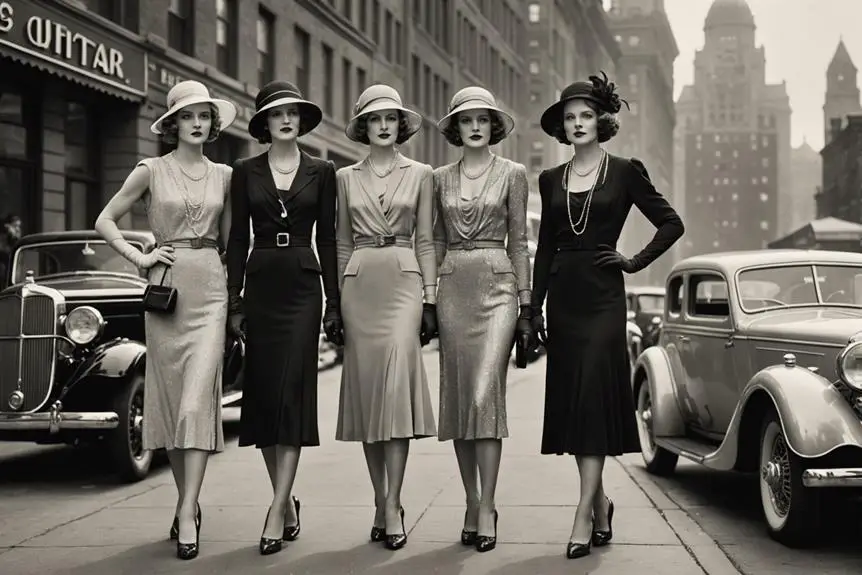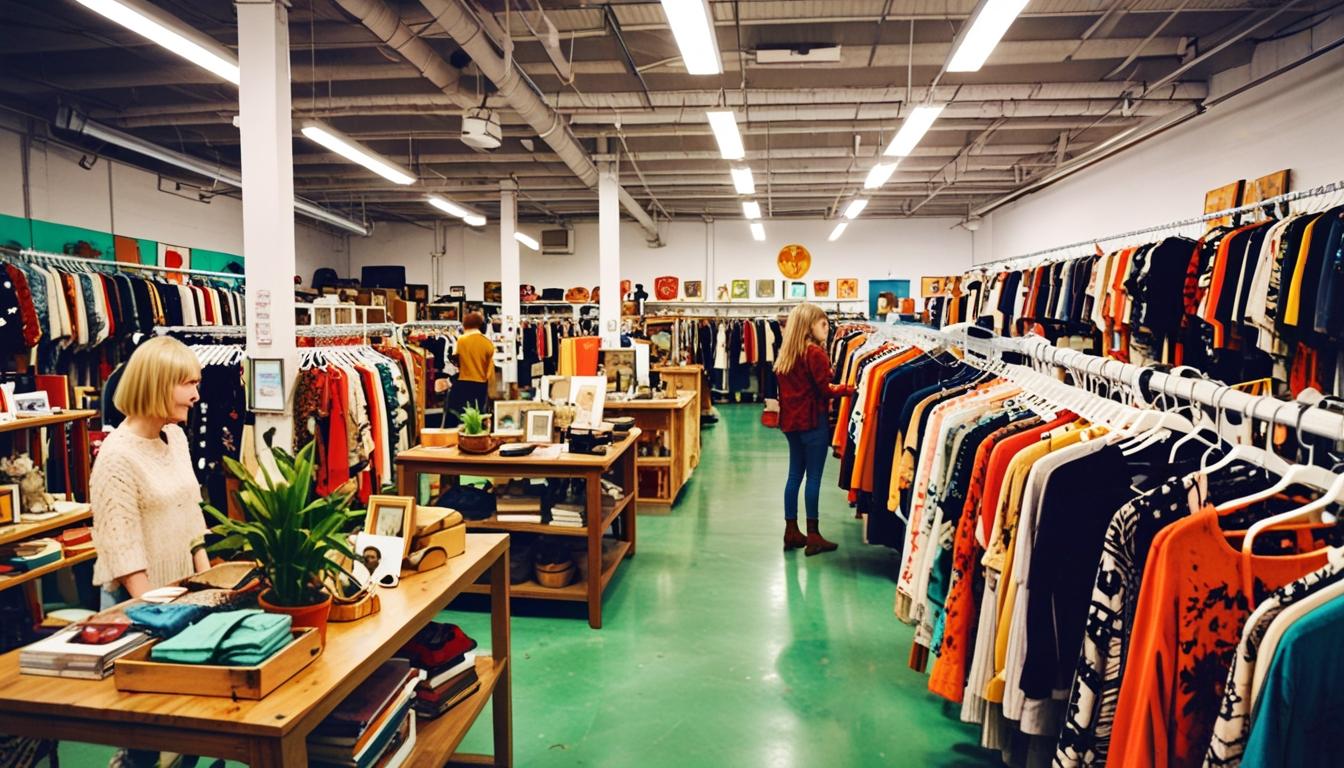In the late 1930s, over 50% of American women began incorporating fashion trends influenced by Hollywood into their wardrobes. As you explore this era, you'll notice how the shift toward structured silhouettes and elegant details transformed everyday attire into something more sophisticated. From cinched waists to dramatic evening gowns, each piece tells a story of resilience and creativity. But what drove these changes, and how did they reflect the cultural landscape of the time? These questions are worth considering as we navigate the intricate tapestry of late 1930s fashion.
Key Womenswear Trends
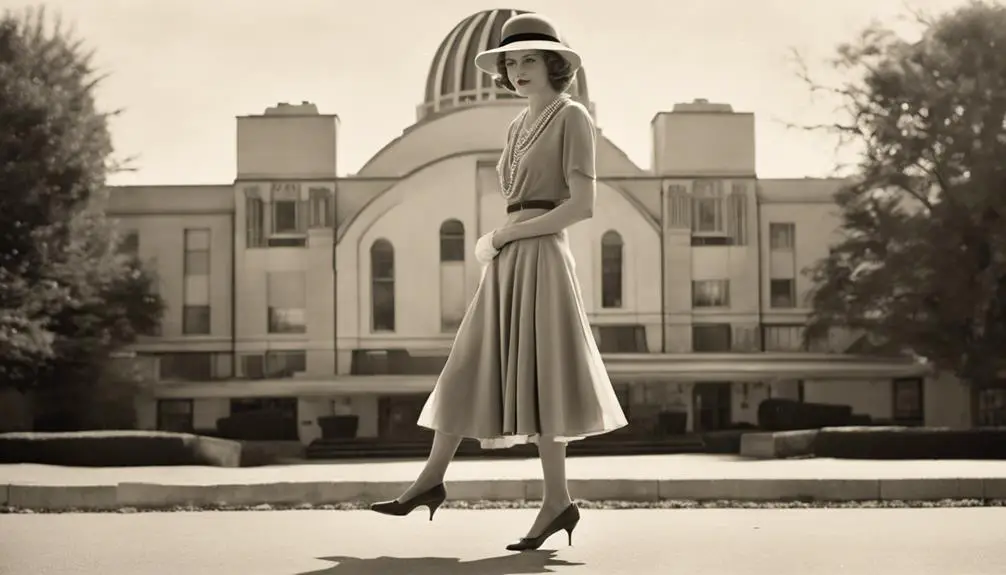
In the late 1930s, women's fashion trends showcased a striking transformation with an emphasis on both structure and elegance. You'd notice that structured silhouettes took center stage, featuring cinched waists and padded shoulders that offered a bold statement. Designers, inspired by the likes of Madeleine Vionnet, introduced bias-cut gowns that elegantly hugged the body, allowing for fluid movement and an effortlessly sophisticated allure.
Eveningwear during this period was nothing short of breathtaking. Longer hemlines became the norm, with backless designs revealing the back as a fascinating area of interest, demanding attention at social gatherings. Day dresses, on the other hand, embraced mid-calf lengths, flared skirts, and delightful decorative details like ruffles, bows, and frills. This blend of femininity and practicality made them perfect for everyday wear, allowing you to feel stylish without sacrificing comfort.
Accessories played a crucial role in completing your look. Gloves, hats, and silk scarves became essential components of a woman's outfit, elevating even the simplest dress into a polished ensemble. The coordination of accessories with dress colors and styles enhanced the overall appearance, showcasing your personal flair and attention to detail.
Menswear Innovations
The late 1930s brought significant innovations in menswear, especially the drape cut suit, which Frederick Scholte popularized. This suit transformed the way men approached tailored menswear, featuring a looser fit that emphasized natural body lines. It was a game-changer, allowing for greater comfort while still showcasing a sophisticated look. Around 1935, tapered trousers became a fashion staple, replacing the baggier styles of previous years. This shift reflected a move toward more refined and tailored menswear, ensuring that men looked sharp without sacrificing practicality. Additionally, the era saw the emergence of classic brands that would later define fashion, much like how vintage Ralph Lauren items are recognized for their lasting quality and design.
Hollywood stars, like Cary Grant, played an essential role in influencing these trends with their polished looks and impeccable style. Their impact led to the adoption of more sophisticated tailoring techniques and accessories, elevating men's formal attire to new heights. During this era, bold geometric patterns in neckties emerged, adding a vibrant touch to outfits and further enhancing men's fashion.
Amid the backdrop of wartime, the British Utility Suit and American Victory Suit also entered the scene. These designs focused on practicality and functionality, cleverly balancing stylish appearance with the fabric restrictions of the time. As a result, men could maintain their polished looks even in challenging circumstances.
Influence of Hollywood
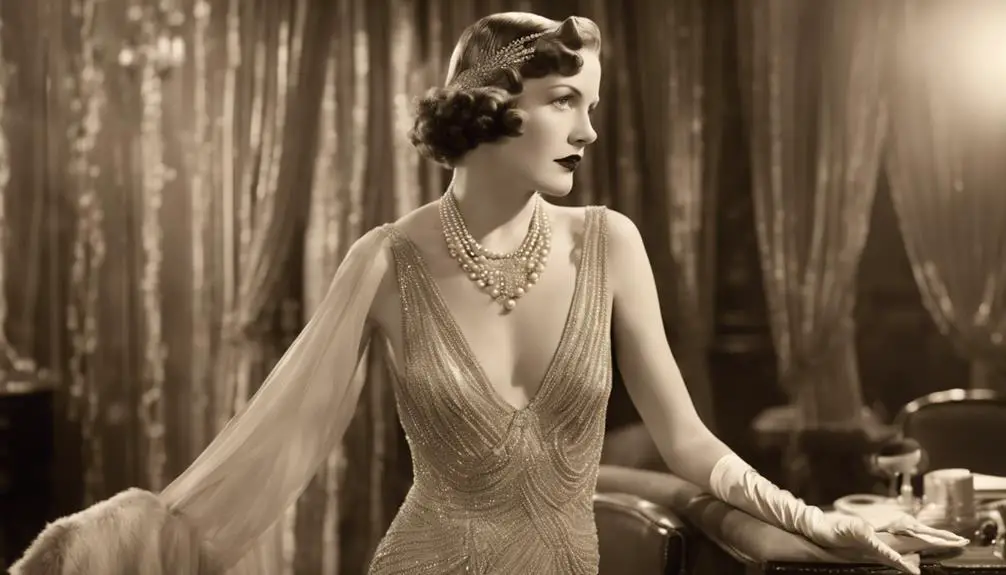
Enthralling audiences with their on-screen glamour, Hollywood stars became the primary trendsetters in late 1930s fashion. Icons like Joan Crawford and Greta Garbo fascinated women everywhere, inspiring them to emulate the glamorous styles showcased in films. Costume designers played a vital role in this fashion revolution, crafting iconic looks that included the elegant bias-cut evening gowns that emphasized a fluid silhouette. Often made from luxurious fabrics like silk and satin, these gowns became synonymous with sophistication and allure.
As Hollywood's influence spread, fashion magazines began to feature stunning photographs of movie stars in high-end couture, merging cinema and fashion in a mesmerizing way. This exposure made glamorous styles more accessible to the everyday woman, especially during the Great Depression. Dress patterns inspired by these film costumes flooded the market, allowing you to create your own Hollywood-inspired looks at home.
Another trend that gained popularity was the "sweater girl" look, introduced by the charming Lana Turner. This casual yet chic style featured fitted sweaters paired with skirts, perfectly embodying the relaxed elegance that many sought during this era. Movie stars not only dictated what was fashionable, but they also changed how women viewed their own style, encouraging a shift toward embracing glamour in everyday life.
In this vibrant period, Hollywood didn't just entertain; it transformed fashion, making it both aspirational and attainable for women worldwide. The late 1930s truly marked a golden age where cinema and style danced together, sparking creativity and inspiration in wardrobes everywhere.
Cultural and Economic Context
Amidst Hollywood's glamorous influence, the late 1930s fashion scene was deeply shaped by the cultural and economic context of the time. The lingering effects of the Great Depression cast a shadow over the fashion industry, urging designers to focus on affordability and practicality. With economic hardship affecting many, simpler designs emerged, utilizing less expensive fabrics like rayon and cotton. This shift made stylish clothing accessible, allowing women to express themselves without breaking the bank.
As a result, home sewing gained popularity, empowering you to create your own fashionable pieces. DIY fashion became a practical solution, with dress patterns flying off the shelves. During this period, stars like Joan Crawford and Greta Garbo became the epitome of style, inspiring you to embrace glamorous evening wear, even in the face of economic constraints. Their influence provided a sense of escapism, reminding you that elegance could still thrive despite challenging times.
Moreover, the end of Prohibition in 1933 ushered in a cultural shift, encouraging a more celebratory approach to fashion. As tensions rose in Europe and the prospect of WWII loomed, practicality took center stage. The emphasis shifted toward utilitarian styles that prioritized comfort and functionality, preparing for potential rationing and resource limitations. In this dynamic landscape, late 1930s fashion represented a fascinating blend of resilience and inspiration, showcasing how you could adapt to the changing world while still celebrating your individuality and flair.
Accessories and Style Elements
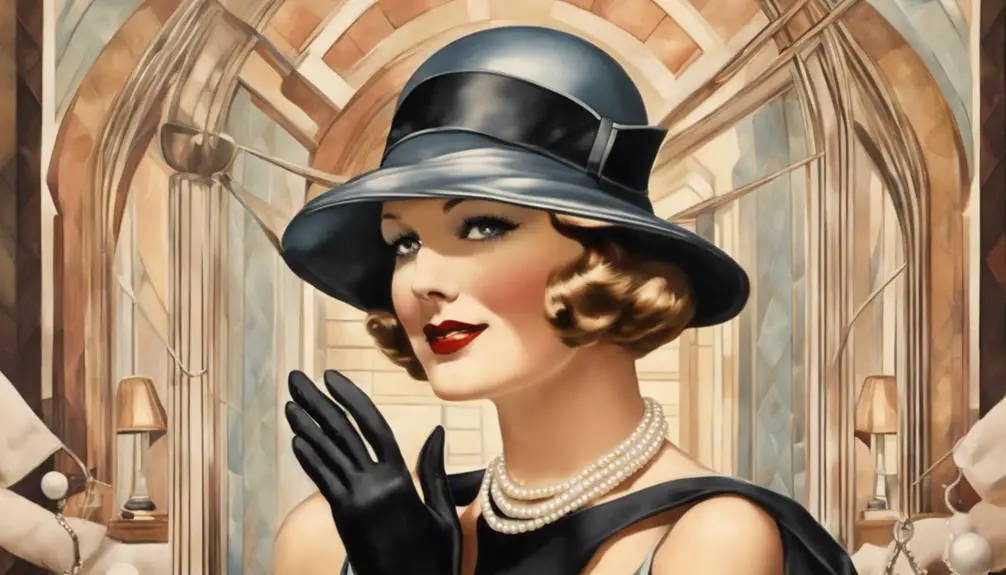
Accessories played an essential role in late 1930s fashion, transforming outfits into complete statements. You'd find that accessories like matching handbags and hats were often crafted in coordinating colors, enhancing the overall elegance of an ensemble. The 1936 spring collection showcased this trend beautifully, setting the stage for how women would express their chic sensibilities through thoughtful accessory choices.
Gloves also saw a shift during this time, moving from elaborate styles to simpler designs. Elbow-length gloves became the go-to for evening gowns, while shorter gloves were favored for daytime wear, adding an air of sophistication without overwhelming the outfit. Statement jewelry took center stage, with bold costume pieces that reflected personal style and social status, allowing you to stand out in any crowd.
Hats were indispensable accessories as well, with styles like berets and turbans gaining popularity. These headpieces not only added flair but were often coordinated meticulously with the rest of the attire, showcasing your fashion savvy. Footwear trends further complemented the feminine aesthetic of the era, featuring two-tone oxfords and strappy shoes with chunky heels that provided both comfort and style.
As you explore the late 1930s, you'll see how these accessories and style elements worked together to create a unique and enchanting fashion landscape, allowing every woman to express her individuality while adhering to the prevailing fashion trends of the time.
